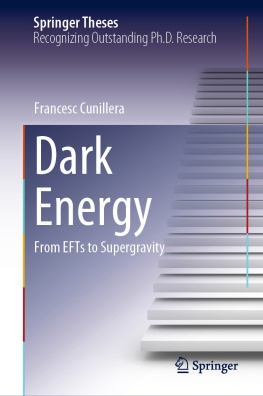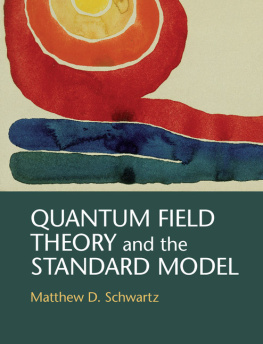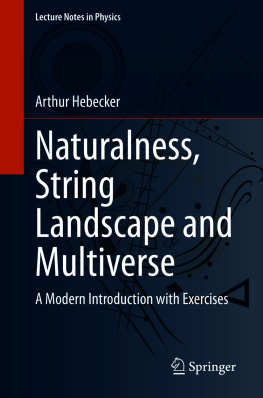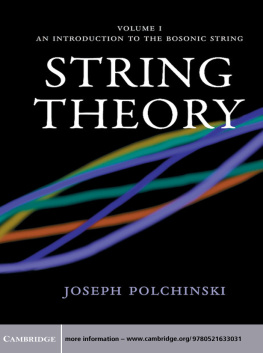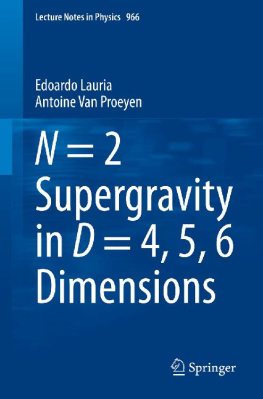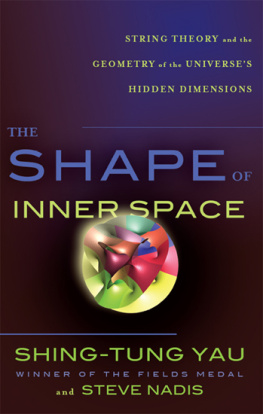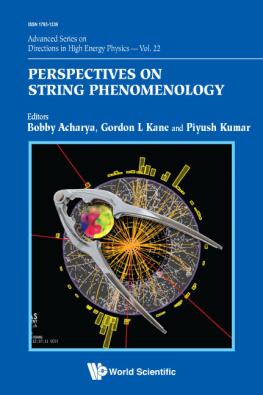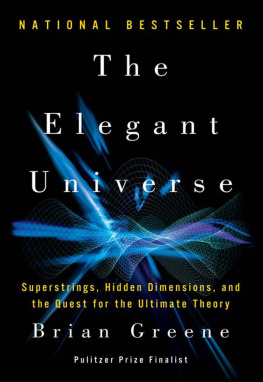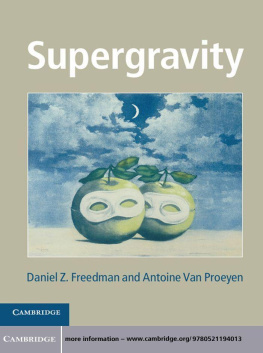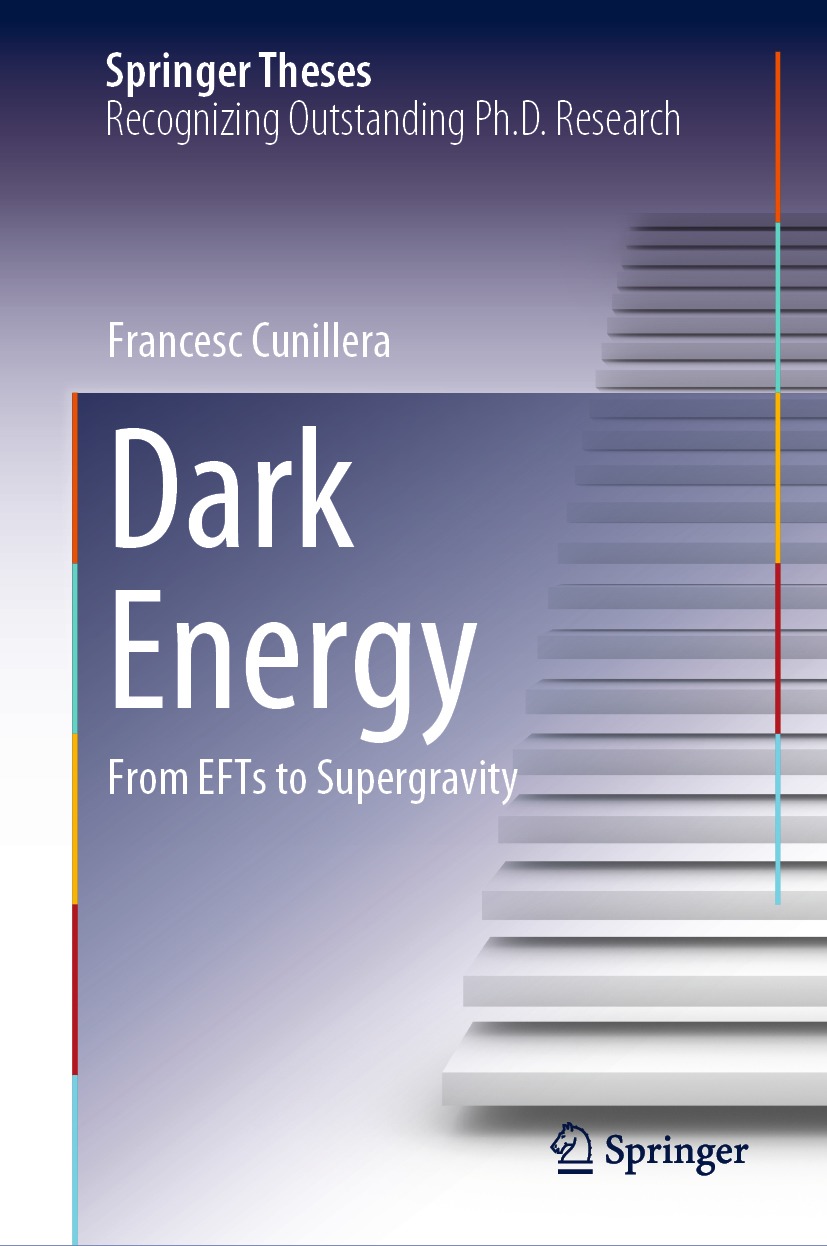Springer Theses Recognizing Outstanding Ph.D. Research
Aims and Scope
The series Springer Theses brings together a selection of the very best Ph.D. theses from around the world and across the physical sciences. Nominated and endorsed by two recognized specialists, each published volume has been selected for its scientific excellence and the high impact of its contents for the pertinent field of research. For greater accessibility to non-specialists, the published versions include an extended introduction, as well as a foreword by the students supervisor explaining the special relevance of the work for the field. As a whole, the series will provide a valuable resource both for newcomers to the research fields described, and for other scientists seeking detailed background information on special questions. Finally, it provides an accredited documentation of the valuable contributions made by todays younger generation of scientists.
Theses may be nominated for publication in this series by heads of department at internationally leading universities or institutes and should fulfill all of the following criteria
They must be written in good English.
The topic should fall within the confines of Chemistry, Physics, Earth Sciences, Engineering and related interdisciplinary fields such as Materials, Nanoscience, Chemical Engineering, Complex Systems and Biophysics.
The work reported in the thesis must represent a significant scientific advance.
If the thesis includes previously published material, permission to reproduce this must be gained from the respective copyright holder (a maximum 30% of the thesis should be a verbatim reproduction from the authors previous publications).
They must have been examined and passed during the 12 months prior to nomination.
Each thesis should include a foreword by the supervisor outlining the significance of its content.
The theses should have a clearly defined structure including an introduction accessible to new PhD students and scientists not expert in the relevant field.
Indexed by zbMATH.
Francesc Cunillera
Dark Energy
From EFTs to Supergravity
Doctoral Thesis accepted by University of Nottingham, Nottingham, UK

Logo of the publisher
Dr. Francesc Cunillera
Centre for Astronomy and Particle Theory, Nottingham Centre for Gravity, University of Nottingham, Nottingham, UK
ISSN 2190-5053 e-ISSN 2190-5061
Springer Theses
ISBN 978-3-031-21467-7 e-ISBN 978-3-031-21468-4
https://doi.org/10.1007/978-3-031-21468-4
The Editor(s) (if applicable) and The Author(s), under exclusive license to Springer Nature Switzerland AG 2023
This work is subject to copyright. All rights are solely and exclusively licensed by the Publisher, whether the whole or part of the material is concerned, specifically the rights of translation, reprinting, reuse of illustrations, recitation, broadcasting, reproduction on microfilms or in any other physical way, and transmission or information storage and retrieval, electronic adaptation, computer software, or by similar or dissimilar methodology now known or hereafter developed.
The use of general descriptive names, registered names, trademarks, service marks, etc. in this publication does not imply, even in the absence of a specific statement, that such names are exempt from the relevant protective laws and regulations and therefore free for general use.
The publisher, the authors, and the editors are safe to assume that the advice and information in this book are believed to be true and accurate at the date of publication. Neither the publisher nor the authors or the editors give a warranty, expressed or implied, with respect to the material contained herein or for any errors or omissions that may have been made. The publisher remains neutral with regard to jurisdictional claims in published maps and institutional affiliations.
This Springer imprint is published by the registered company Springer Nature Switzerland AG
The registered company address is: Gewerbestrasse 11, 6330 Cham, Switzerland
Supervisors Foreword
There is an enduring debate as to whether the study of string theory, or indeed any theory of quantum gravity, represents science in the traditional sense of making conjectures, deriving predictions and carrying out experiments to test those predictions. The key obstacle is the scale at which quantum gravity effects are likely to manifest themselves, being far in excess of any foreseeable experiment. Nevertheless, such criticisms, at least in the context of string theory, are a little overstated.
String theory is built on two pillars of twentieth-century physicsquantum mechanics and relativity. Indeed, if we consider the two to two scattering of gravitons in General Relativity, the amplitude describing the process violates unitaritya key ingredient of quantum mechanicswhenever the incident energy exceeds the Planck scale. The only known completion of this amplitude that preserves unitarity, remains weakly coupled and preserves Lorentz invariance to arbitrarily high energies, is the Virasoro-Shapiro (VS) amplitude. This is precisely the amplitude describing the scattering of closed strings in string theory. Thus, the foundation of string theory relies heavily on those two fundamental pillars of quantum mechanics and relativity. If either pillar should fall in experiment, then so will string theory.
In the last decade and a half, the so-called swampland programme has sought to provide another key test of string theory and its underlying principles. What the swampland programme seeks to do is to consider the space of consistent low-energy effective theories and to split them into those that are in the landscape and those that are in the swamp. If a theory is in the swamp, this is because it cannot be derived as the low-energy limit of a consistent compactification of string theory. If it is in the landscape, then the converse is truewe should be able to derive it from string theory. As an example, consider a theory of particles charged under a gauged U(1), minimally coupled to General Relativity. In principle, this theory is a consistent quantum field theory at low energies regardless of the strength of the corresponding electromagnetic and gravitational forces. However, a study of the decay of extremal black holes suggests that only those theories for which gravity is the weakest force can emerge from a consistent theory of quantum gravity like string theory. If the gravitational force is stronger than the electromagnetic force, the theory is expected to be in the swamp. In this sense, we can test quantum gravity simply by comparing the relative strength of gravity compared with the other fundamental forces in nature.
There are many swampland conjectures including the weak gravity conjecture described above, the distance conjecture and the controversial de Sitter conjecture. The latter is the claim that stable de Sitter vacua are in the swamp. The evidence for this is circumstantial, loosely based on the difficulty in deriving consistent solutions from perturbative string compactifications. The underlying reason for this is in the need to break supersymmetry in de Sitter, which can place considerable restrictions on calculational control. However, if true, the de Sitter swampland conjecture has far-reaching implications for both the early and late universe. At early times, the conjecture is in tension with inflation. At late times, it is in tension with dark energythe observation that the universe is undergoing a period of quasi de Sitter accelerated expansion. To release the tension with late universe physics, it is often assumed that dark energy should not be associated with a de Sitter vacuum, but with a dynamically evolving field dubbed quintessence. This is usually taken to be a scalar in slow roll along a moderately flat (effective) potential.

